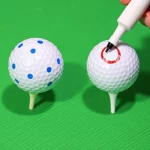Measuring your putter might sound like a simple task, but it’s an essential aspect of improving your game. A well-measured putter can help you achieve better accuracy and consistency on the greens. In this article, we’ll discuss how to measure a putter, the key factors to consider, and how these measurements can impact your performance. Whether you’re a seasoned golfer or just starting, this guide will help you understand the ins and outs of putter measurements.
Why Measuring Your Putter Matters
Measuring your putter is crucial for several reasons:
- Height: Your height affects your playing posture and how you set up to make a putt.
- Grip Size: Ensures that your grip fits comfortably, preventing unwanted tension in your hands and arms.
- Length: A putter that’s too long or too short can lead to poor alignment and inconsistent strokes.
An improperly measured putter can negatively impact your confidence and performance. Getting the right fit ensures that every putt feels natural and precise.
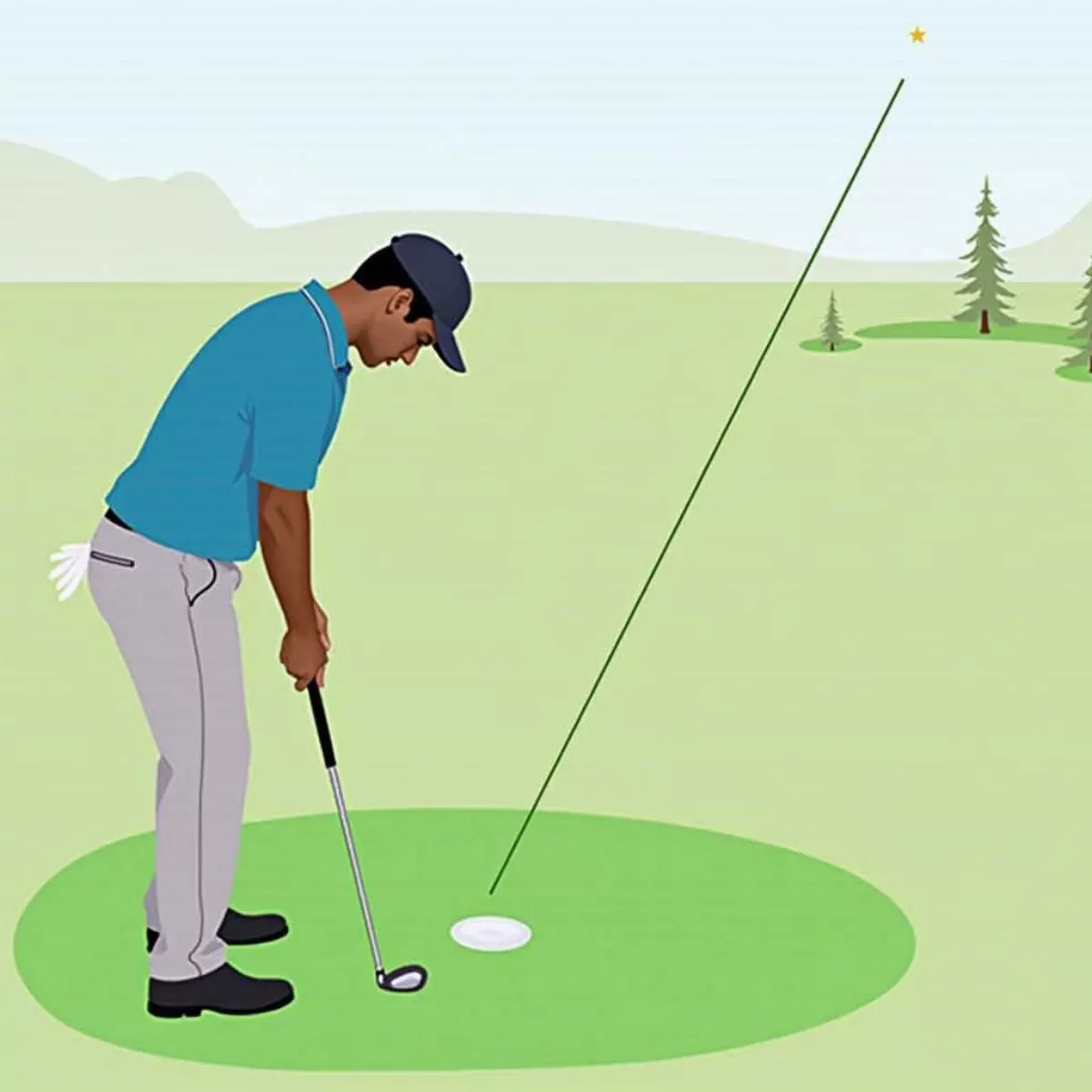 Golfer Putting Posture
Golfer Putting Posture
Key Factors to Consider When Measuring a Putter
Before diving into the actual measuring process, let’s explore some crucial factors you need to take into account:
1. Putter Length
- Standard Lengths: Most putters range from 32 to 36 inches, but custom lengths are available.
- Measuring for Length: Stand upright and let your arms hang naturally at your sides. Measure from the floor to the top of your hands.
2. Putter Lie Angle
- Importance of Lie Angle: The lie angle affects how the putter contacts the ground. A proper lie angle will ensure that the face of the putter stays square to the target line.
- Measuring Lie Angle: Check how the putter sits on the ground during a setup. If the toe is up or the heel is down, it may need adjustment.
3. Grip Size
- Choosing the Right Grip: There are several grip sizes—standard, midsize, and oversized. A grip should fit comfortably and allow for control without gripping too tightly.
- Grip Measurement: Hold the putter in your normal stance. If your fingers wrap around the grip with excessive overlap or are too tight, consider a different size.
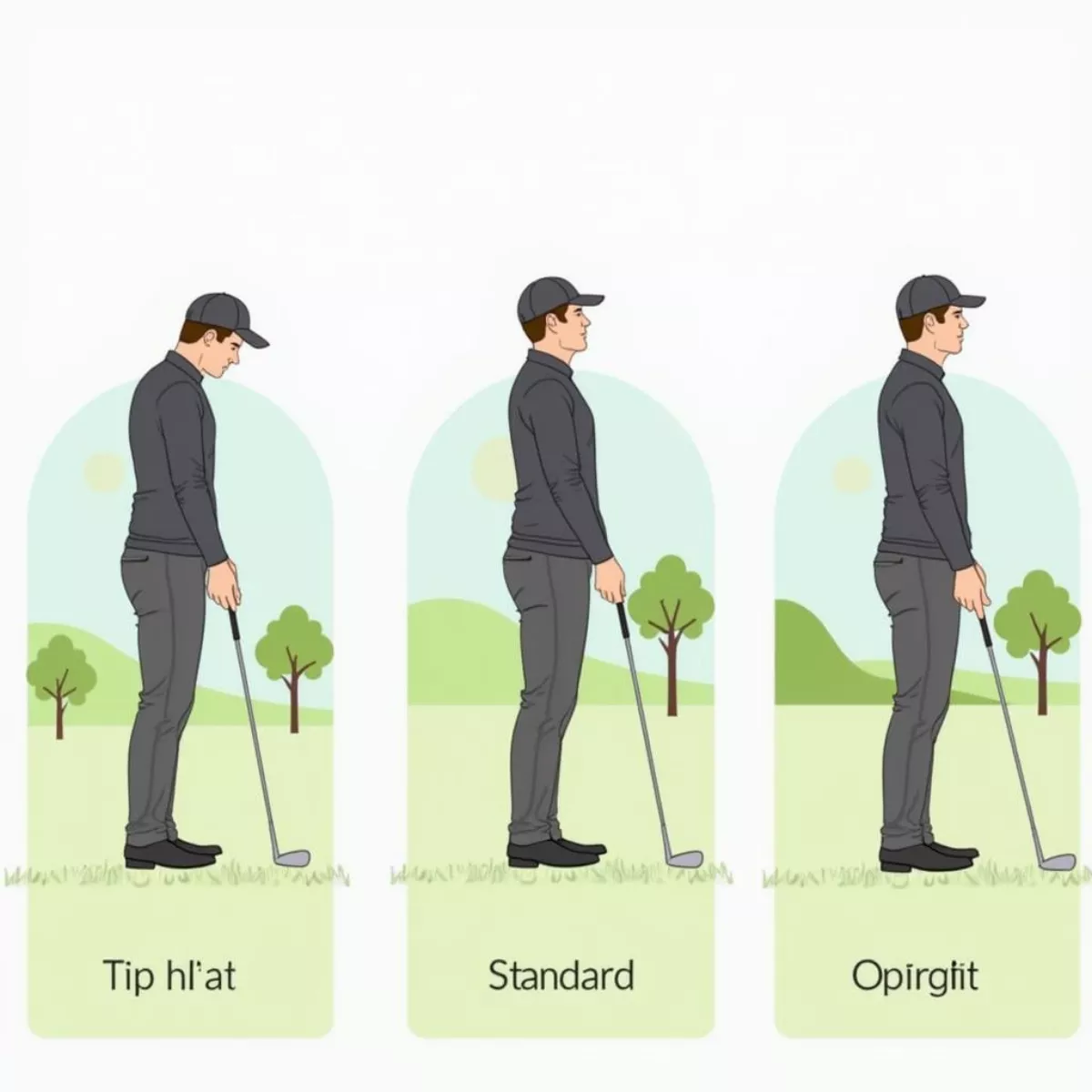 Putter Lie Angle Comparison
Putter Lie Angle Comparison
Steps to Measure Your Putter
Here’s a step-by-step guide on how to measure a putter effectively:
Step 1: Gather Your Tools
You’ll need the following:
- A measuring tape or ruler (preferably in inches).
- A flat surface (like a putting green or a smooth floor).
- A friend or coach, if possible, to help you with certain measurements.
Step 2: Measure the Length
- Stand Normal: Follow the natural posture where your arms hang comfortably by your side.
- Measurement: Use the measuring tape to measure from the ground to the top of your hands. This is your preferred putter length.
Step 3: Measure the Lie Angle
- Place the Putter: Lay the putter flat on the ground.
- Check Alignment: Ensure the putter’s face is square to your target line.
- Adjust: If the toe points up, consider a flatter lie angle, and if the heel is off the ground, you may want a more upright angle.
Step 4: Measure the Grip Size
- Grip Test: Take hold of the putter as you would address the ball.
- Fingertip Check: If your fingers barely touch your palm, your grip might be too small. If they overlap too much, consider a larger grip.
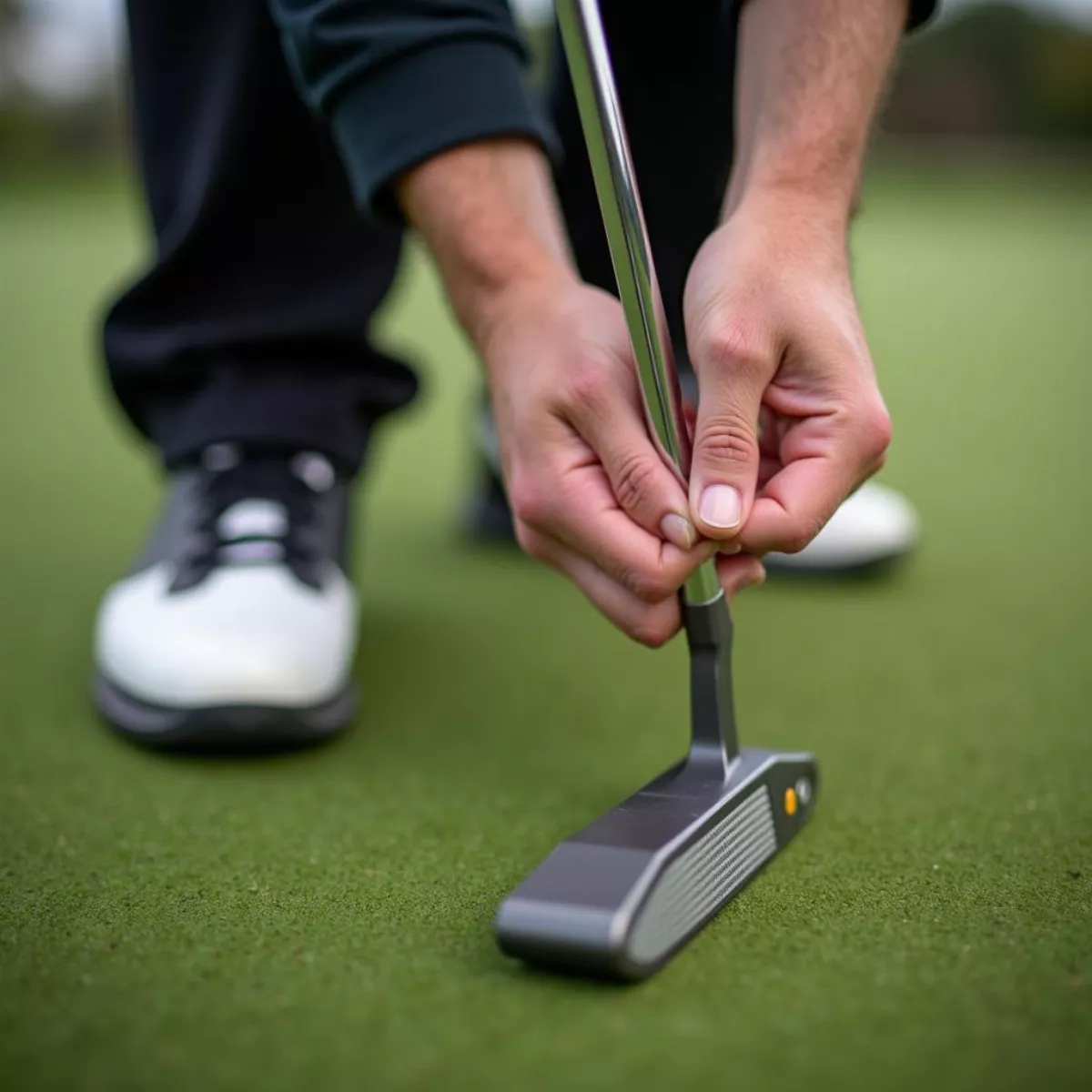 Measuring Putter Grip Size
Measuring Putter Grip Size
Additional Measurements You Might Consider
While the basic measurements are typically enough, some golfers choose to take additional measurements for more specific setups.
1. Balance Point
- What is it?: The balance point of a putter can impact how it reacts during a stroke.
- How to Measure It: A simple way is to balance the putter horizontally on your finger until you find the center point.
2. Weight
- Why it Matters: A heavier putter can help maintain momentum, while a lighter one can offer better feel.
- Measuring Weight: Use a scale to check the putter’s weight, typically measuring between 320 to 400 grams.
3. Toe Hang vs. Face-Balanced
- Understanding Toe Hang: Different putters offer different toe hang configurations. Test your putter by placing it on the palm of your hand.
- Measurement: The more the toe points downwards, the more toe hang it has.
Putter Fitting vs. DIY Measurements
While you can take measurements at home, consider head to a professional club fitter for precision fitting. Here’s why:
- New Technology: Fitting services offer advanced technology to assess your stroke and align your putter accordingly.
- Customization: Professionals can adjust the lie angle, length, and grip size for optimal performance.
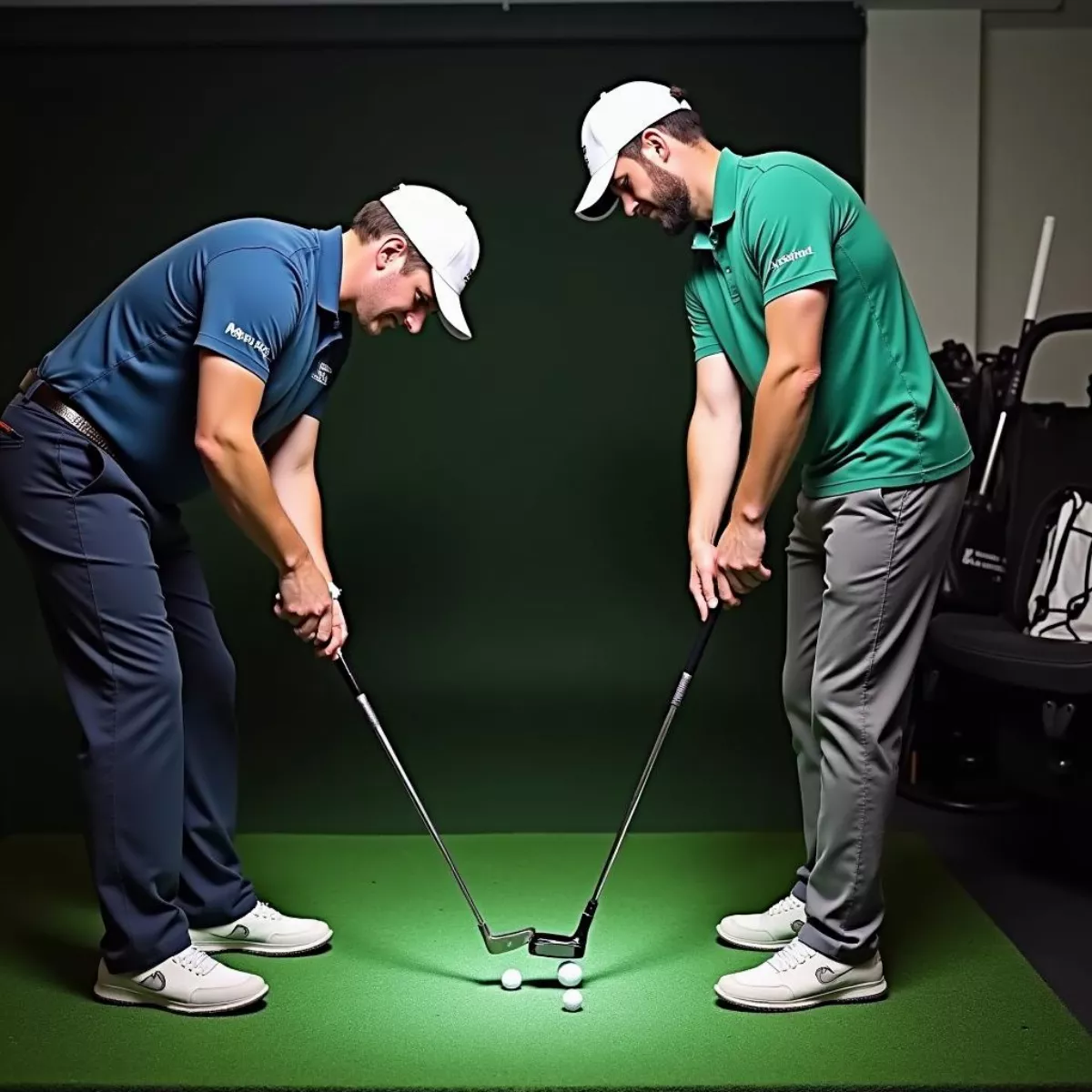 Professional Putter Fitting Session
Professional Putter Fitting Session
Key Takeaways
- Measuring your putter can dramatically improve your putting performance.
- Putter length, lie angle, and grip size are critical metrics to consider.
- DIY measurements can work, but a professional fit can ensure precision and comfort.
Frequently Asked Questions (FAQ)
1. What length should my putter be?
Most golfers use putters between 32 to 36 inches, but the right length is based on personal comfort and height.
2. How can I tell if my putter is the right length?
Stand in your natural posture with your arms hanging down. Measure from the ground to the tops of your hands. This measurement gives you a good starting point.
3. What is the importance of the lie angle?
The lie angle affects how the putter makes contact with the ground, influencing accuracy and consistency in your putting.
4. How often should I measure my putter?
Regularly measuring is advisable—particularly after changes in your swing or if you experience discomfort during putting.
5. Can I adjust my putter at home?
Yes, minor adjustments can be done at home for length and grip. However, for lie angle adjustments, consulting a professional is recommended.
6. What’s the difference between a face-balanced and a toe-hang putter?
Face-balanced putters remain level when balanced on your finger, while toe-hang putters hang at an angle. Your stroke type influences which is better for you.
7. How can I measure my grip size correctly?
Hold the putter in your stance. If your fingers wrap around too tightly or not at all, consider adjusting to a different grip size.
8. Is it worth getting a professional fitting?
Absolutely! A professional fitting can provide insights and adjustments you might not achieve alone.
9. What should I do if I’m unsure about measurements?
Consider getting a fitting session with a professional to ensure all measurements are optimal for your body and style of play.
10. How does the balance of the putter influence my putting?
A putter’s balance influences how it swings through the ball, thus impacting your ability to maintain a consistent stroke.
By understanding how to measure and fit your putter correctly, you’re setting yourself up for success. Visit our other articles to enhance your golfing knowledge, and don’t hesitate to reach out with any more questions. Happy putting!
